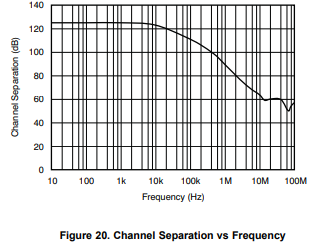Is there a graph for the cross talk versus frequency in the OPA2376 dual op amp?
I am assuming that it gets worse with increasing frequency.
I have a 15kHz sine wave coming out of pin 7 at 2Vpp.
I have a 3mVpp 15kHz sine wave coming out of pin 1.
I am certain that this unwanted event is happening inside the chip.
Both op amps are inverting with a gain of 0.1(yes they attenuate the signal).
The power supplies are +-2.5V.
I am thinking that an opamp with a wider bandwidth may improve things.
Regards
Tim Orr


